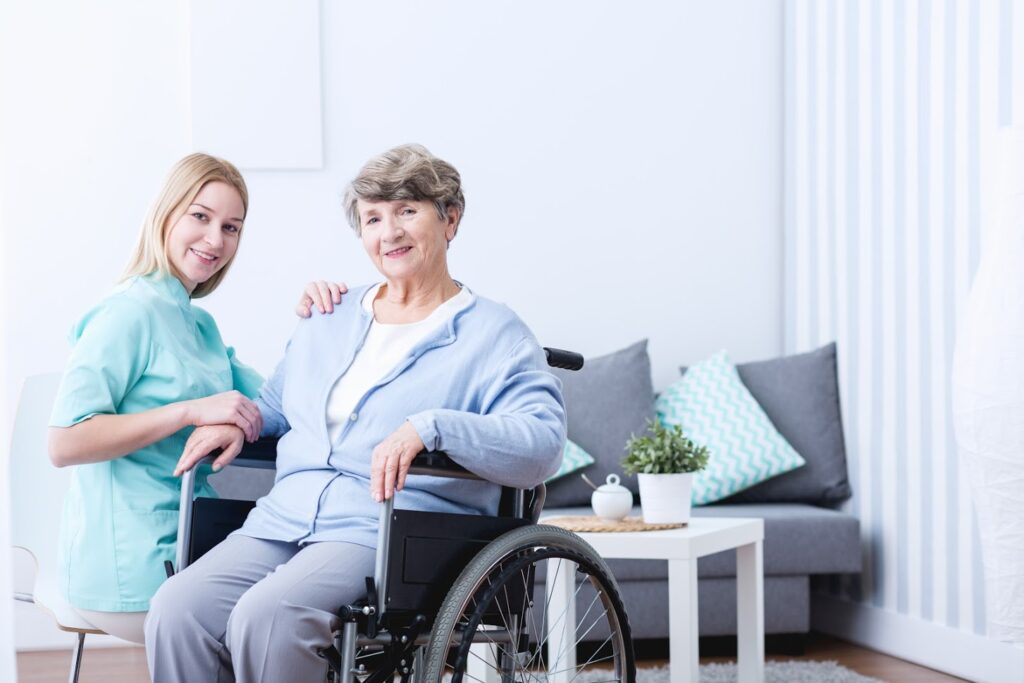
As people develop physical or mental infirmities, they can find such routine activities as getting dressed a genuine challenge. From choosing the wrong articles of clothing for the season to struggling with fasteners and awkward physical positions, these individuals could often use some compassionate assistance when dressing.
If you care for someone who faces this kind of challenge, you can provide welcome help once you understand what kinds of problems you may need to address and how to address them effectively. Take a look at four smart tips you can employ to help your loved one dress and undress more safely and easily.
Administer Your Loved One’s Daily Wardrobe
Individuals who suffer from dementia can lose the ability to make wise decisions about what they should wear on any given day. For instance, someone who suffers from Alzheimer’s disease might wear heavy clothes in the summer or light clothes in the winter. Others may wear the same items every day out of forgetfulness.
If your loved one has such a cognitive disorder, you can prevent them from wearing the wrong clothes for the season by switching out their closet selection from one time of year to the next. You may also want to lay out the day’s clothes on your loved one’s bed, with two or three options for your loved one to choose from.
Replace Challenging Clothes With More User-Friendly Ones
Even the most appropriate clothes for the occasion or season will prove inadequate or frustrating if your loved one cannot put them on or take them off easily. Arthritis can make buttons painfully hard to deal with, while balance or weakness problems can make putting on a pair of pants a potentially hazardous adventure.
Fortunately, you can remove some of these obstacles by modifying your loved one’s wardrobe. Replace buttoned shirts and traditional laced shoes with items that feature strips of Velcro for easier manipulation. Buy pants that have an elastic waistband for your loved one, eliminating the need to struggle with a belt.
Invest in Some Helpful Dressing Aids
Many people with mobility challenges still prefer to have as much autonomy as possible, dressing and undressing themselves to the best of their current ability. If your loved one meets this description, help preserve that autonomy by purchasing some handy assistive devices to make certain dressing tasks easier.
Dressing sticks can prove invaluable for individuals who have trouble reaching, twisting, or bending as they dress. A typical dressing stick has small hooks at each end to grab hard-to-reach fabrics. Some of these sticks also have a shoehorn at one end, allowing the user to put on or take off shoes without bending over.
If your loved ones would rather not give up buttoned shirts just because of the challenges from the buttons, invest in a button hook aid. This handheld device includes a hook that manipulates the buttons without hurting arthritic fingers.
Monitor Your Loved One’s Skin Health During Wardrobe Changes
People with mobility problems may have trouble examining themselves in a mirror, while individuals with dementia may not bother to look for potential skin problems such as rashes or sores. This unintentional neglect can allow skin irritations to develop into serious conditions.
If you assist your loved one with dressing and undressing, take the opportunity to perform a quick examination of the skin for any apparent problems that might call for evaluation by a dermatologist. In sedentary individuals, look for pressure sores in areas such as the back, shoulders, buttocks, and elbows.
Nancy’s Home Care regularly assists people who need help with activities of daily living, including basic self-care tasks such as dressing. Contact us to find out how we can help you (or other adult caregivers in your home) lend aid to that special someone.
